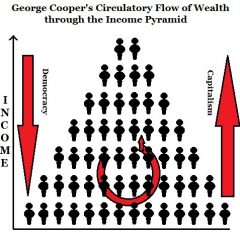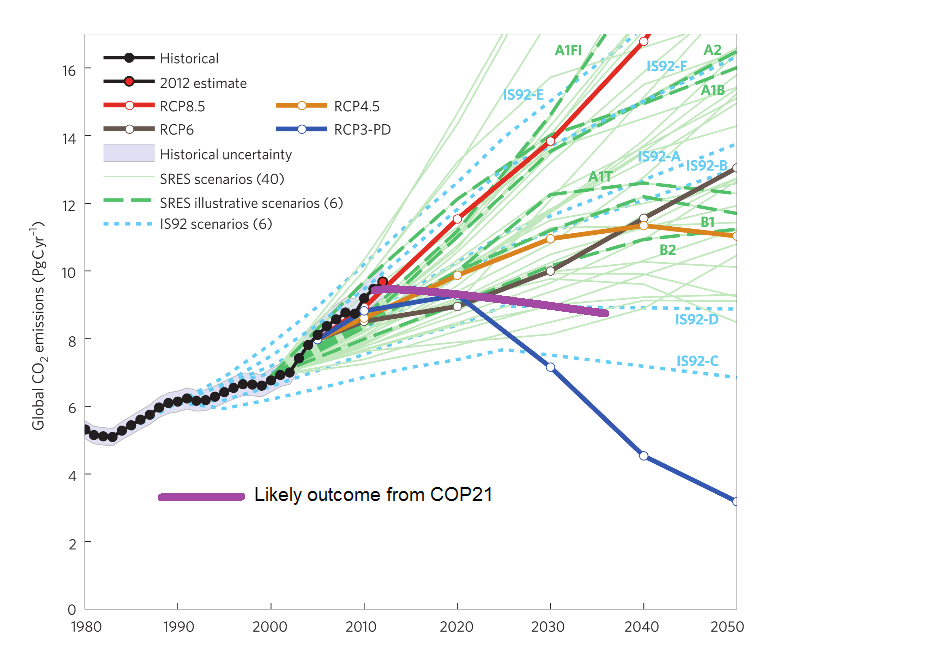The TPP is presented as opening up trade between the Pacific nations, but the sub-text is preserving first-mover-advantage.
TPP – Staying at the Top
The main thrust of the TPP is intended to extend the rule of law to cover intellectual property. A secondary purpose is to stop nations from passing laws that hurt an already established advantage in the market place. In other words, to preserve whatever first-mover-advantage has already been earned (or achieved by whatever means).
It may not have been the clearly thought through intention of the legislators, but the outcome is to ensure that nations that are already poor remain relatively poorer than the richer nations.
In Australia, we have the naive dream that we will be a supplier of intellectual goods to Asia. If this dream is realized, what is the result for Asia? Are all Asian supposed to be satisfied with supplying cheap consumer goods to Australia, while the Australians supply the more expensive and more profitable intellectual goods to Asia? At least, if the TPP deal is agreed in the USA, then Australians will be able to hang onto whatever first-mover advantage it has, and the Asians will be the poorer as a result.
The USA is beginning to feel the first winds of change resulting from the availability of cheap Asian goods. Its leaders also have a dream of hanging onto their hard-won first-mover advantage, which they hope will ensure that alternative jobs will become available from those that are lost. This, of course, is a forlorn hope, as current experience with structural unemployment in the USA has already shown.
Nevertheless, despite the weakness of the case for even more free trade, the intention of the TPP is to ensure that the developing and emerging nations will remain on the teat of the West for intellectual property for as long as this can be sustained, thus keeping them relatively poorer than the West.
First Mover Advantage
Any newly emerging nation would know that an existing first-mover-advantage is very difficult to overcome. It was an issue faced in the USA during the 19th century, when the cloth and clothing manufacturers on the US east coast found that they could not compete on a “level playing field” with the British manufacturers. Those politicians in the US who wanted to build up a US manufacturing industry argued for the imposition of tariffs. Eventually the advocates of the so-called American System, which involved introducing tariffs, won the political argument, and the USA went on to become a manufacturing power-house. As a consequence, UK manufacturing dominance came to an end. It was a hard-fought fight, even though it is obvious to us now that the advocates of the American System were in the right.
China has its own strategies for overcoming first-mover-advantage. This involves a combination of tariffs, subsidies and other protective measures to support its developing and established industries. It is also claimed that the Chinese use industrial espionage and the blatant stealing of secrets to leap-frog the hurdles standing in the way of developing high-tech industries. The TPP is designed to counter both of these, at least within the developing nations that are signatories to this deal.
So, if tariffs and cheating are not open as a means of overcoming first-mover-advantage what are the options for developing nations? If anyone knows what they are, please comment on this post.
Fraudulent Arguments for Free Trade
Advocates for Free Trade often argue that it lifts poor nations out of poverty. This is only partially true; and has a very limited impact. The wages in Bangladesh for textile workers have increased from $1 day to $2 day as a result of increased exports of finished garments. Yet any attempt to push wages higher, towards Western standards, is met the fierce resistance from the textile manufacturers. They probably use the argument that an increase in pay like that will make them noncompetitive. So unless Bangladesh can come up with new industries in which they can compete, so that there are other opportunities for the Bangladeshi people to gain work at higher pay, it looks like the future for wages in Bangladesh is likely to stop at a maximum of $5 day.
Also, the advocates of Free Trade are unlikely to be the workers who will be the first to be displaced in Western nations. If Western nations can claim to be virtuous by opening their industries to fierce competition from Asia (and from Mexico and South America), it is not the advocates of this policy that will bear the cost: it is the ordinary workers on those nations. These are the workers who are unlikely to get jobs in the “winner-takes-all” high tech jobs, such as in Apple and Google.
Another fraudulent argument for Free Trade is to cite China as a shining beacon. Certainly it has benefited from the opening of trade in Western nations. But it has made the most of this situation by protecting its own industries at the same time. With this protectionism (and possibly cheating as well), it is unlikely that China would have been able to move hundreds of millions of workers from farms to the cities. It is not Free Trade on its own that has helped China to develop. It also required the Chinese government to look after the interests of its own people.
TPP is a Moral Fraud
The TPP is advocated on the basis that it will help developing nations to develop. In fact, what it is designed to do is to entrench privilege. This is not the privilege of entire nations, but rather the privilege of corporations. It is not privilege of all corporations that is being protected: it is the privilege of those corporations that have an edge that makes them the best in the world.
I don’t want my world to be come a place in which only the “very best” or most successful have a reasonable share in its abundance. I want a world in which everyone has a fair chance of success, and a reasonable opportunity for each to share in the success of his or her own nation. That is why agreements like TPP are an anathema to me, along with anything that reduces the power of democratic governments to shape their societies according the needs and aspirations of their own peoples.
Do you agree?



